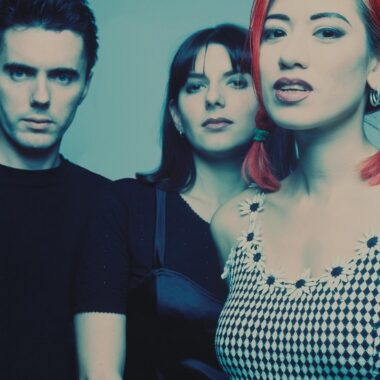
Lush and the Colours of Shoegaze
Lush, formed in London in 1987 by Miki Berenyi and Emma Anderson, were one of the most distinctive bands to emerge from the shoegaze era. Their sound combined the dense, reverb-soaked textures typical of the movement with luminous pop melodies and ethereal vocal harmonies. Where many shoegaze bands leaned heavily into obscured vocals and overwhelming guitar noise, Lush struck a careful balance, offering songs that shimmered with atmosphere yet retained a clarity that made them accessible and emotionally direct.
Their 1990 mini-album Scar introduced the world to a group with both grit and delicacy. Shortly after, EPs like Mad Love and Sweetness and Light positioned Lush at the centre of the burgeoning shoegaze scene. By the time they released their full-length debut Spooky in 1992, produced by Cocteau Twins’ Robin Guthrie, they had cemented their reputation as a band who could blend dream pop beauty with shoegaze intensity. Songs like “For Love” and “Superblast!” revealed a knack for melody beneath the haze, setting them apart from many of their peers.
As their career progressed, Lush continued to evolve. Albums such as Split and Lovelife showcased a growing confidence in songwriting and a willingness to embrace brighter, poppier textures. By the mid-1990s, as Britpop rose to dominance, Lush found themselves straddling two worlds: the shoegaze underground from which they emerged and the more mainstream alternative rock landscape that was rapidly unfolding. Their final pre-breakup album Lovelife in 1996 leaned further into that pop sensibility, producing tracks like “Single Girl” that found chart success while still carrying their unmistakable atmosphere.
What made Lush stand out was the duality at their core. Their music carried a softness in vocal delivery, often weaving Berenyi and Anderson’s voices together in harmonies that felt otherworldly, but their guitars could still roar with distortion when needed. This contrast gave them a unique identity within shoegaze, bridging the gap between the dreamy introspection of bands like Slowdive and the sharper edges of Britpop.
Though their original run ended in 1996, their influence has been far-reaching. Modern shoegaze and dream pop bands often cite Lush as a touchstone, particularly for their ability to fuse atmosphere with melody in a way that feels both immediate and timeless. Groups like Wornsteps have looked to Lush as proof that shoegaze does not need to sacrifice clarity for immersion. The band’s vocal layering and shimmering guitar tones remain templates for how to create music that is immersive without losing its emotional centre.
Lush reunited briefly in 2015, reminding audiences of the enduring power of their sound. While the reunion was short-lived, it reaffirmed their place in shoegaze history, not as a footnote but as innovators who expanded the genre’s palette.
Today, Lush’s legacy shines through in the countless artists who take cues from their approach to balance: the light against the heavy, the melodic against the chaotic. They showed that shoegaze could be colourful, textured, and deeply human. In the landscape of alternative music, their voice remains as vital as ever, shimmering like the title of their breakthrough track, a lasting sweetness and light.